
Ybarra Lines M.S Cabo San Roque 1957 & the Cabo San Vicente -1959
Please Note: Firefox and some iPad’s
or iPhone’s, etc are not suitable
Use Internet Explorer or Google
for this page to load perfectly!

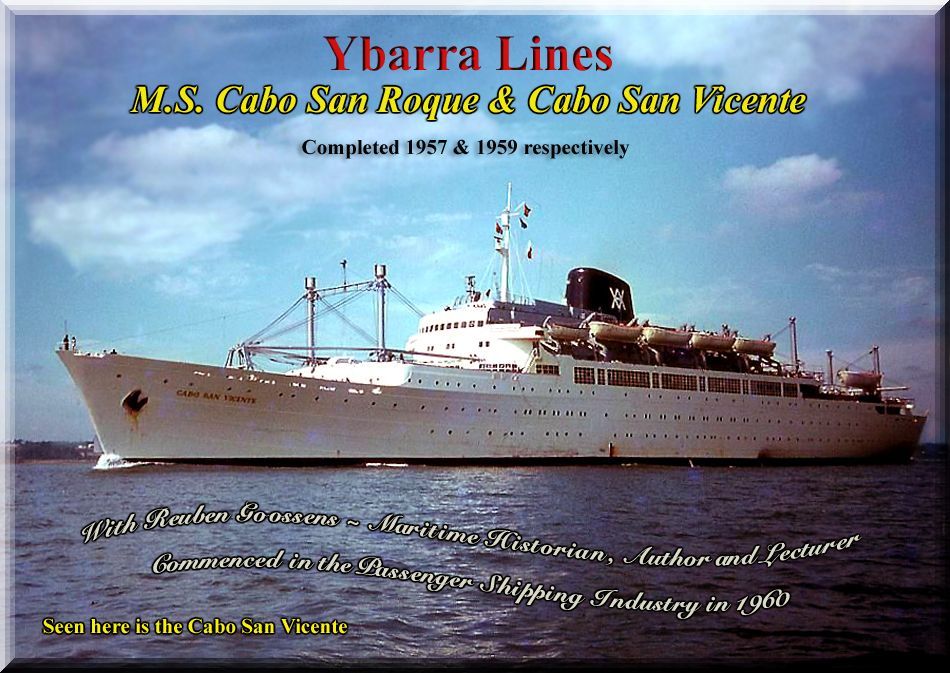
A Wonderful Story of Two Popular &
Beautiful Ybarra Liners
Ybarra Line was founded to operate cargo
services between
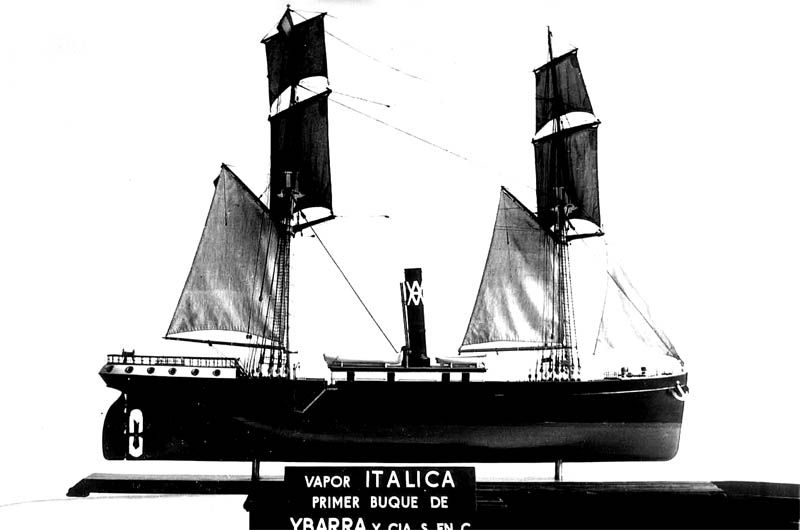
This is the S.S. Italica being Ybarra’s very first steam ship, yet with its two tall masts, it could
use its sails and cut costs whenever the weather conditions were right, she was acquired in 1960
In 1919 a regular service was established to
the
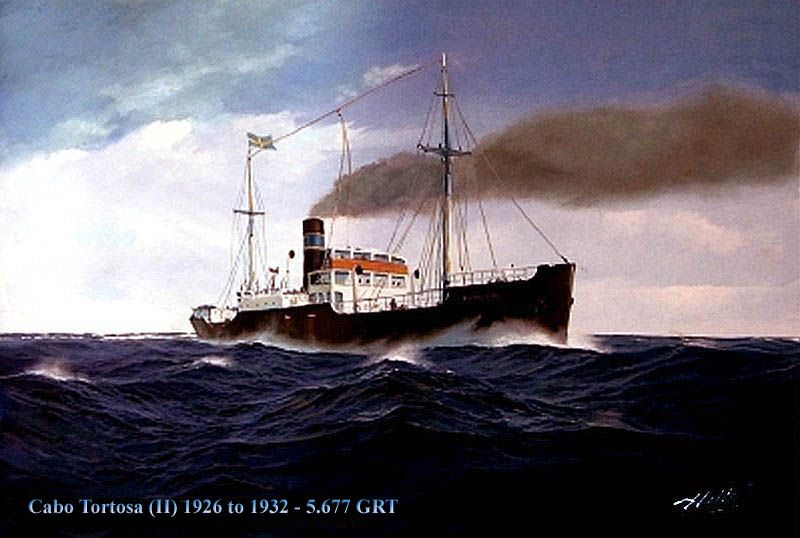
A painting of the very first Ybarra passenger-cargo ship the Carbo Tortosa II, the first ship of that name was a freighter from 1893
She made a total of three round voyages,
departing for the last time from
Early Design:
The new ships were intended to be revolutionary and would have the finest designed interiors packed with remarkable comfort and wonderful décor in all their public rooms. Yet amazingly the company did want these ships have a slightly traditional look, although modern, thus their original designs showed them with two funnels and two masts, which would have made them look very much like traditional liners. But Ybarra decided to retain the new modern exteriors and have the single beautifully designed funnel, a tall radar mast atop the Bridge. And aluminium painted kingposts forward and aft, and upon completion the results were outstanding and the then ultra modern looking passenger liners were a hit when they appeared on the scene! In the late 1950s!
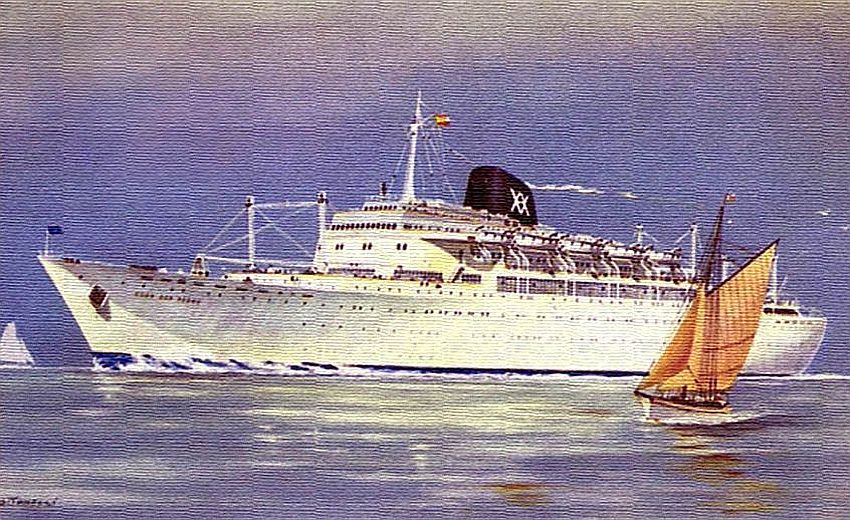
This fine painting of the new Ybarra ships revealed their new design, after the external design changes were made
Ybarra’s two new passenger liners were
built at the “Soc Espanola de Construccion Naval” of
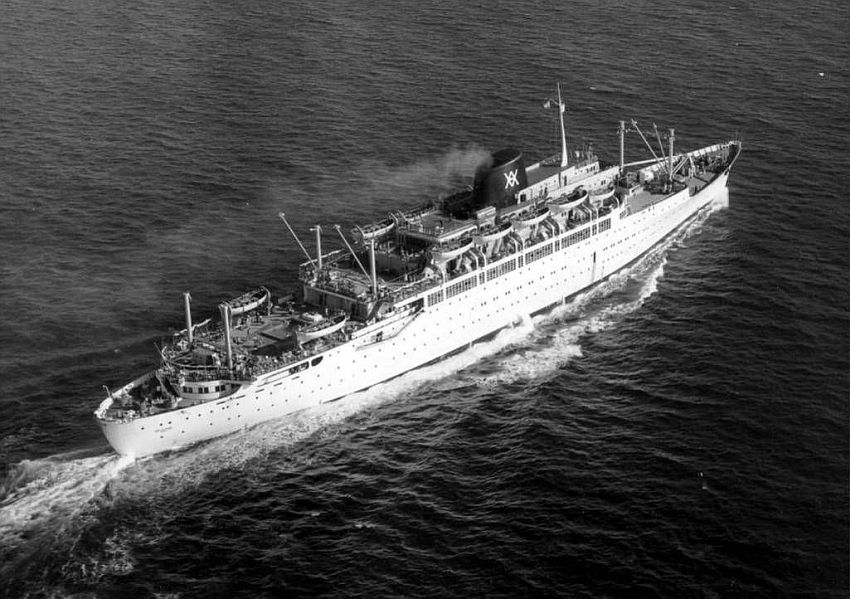
An
aerial publicity photo of the
The second of the identical twins was named
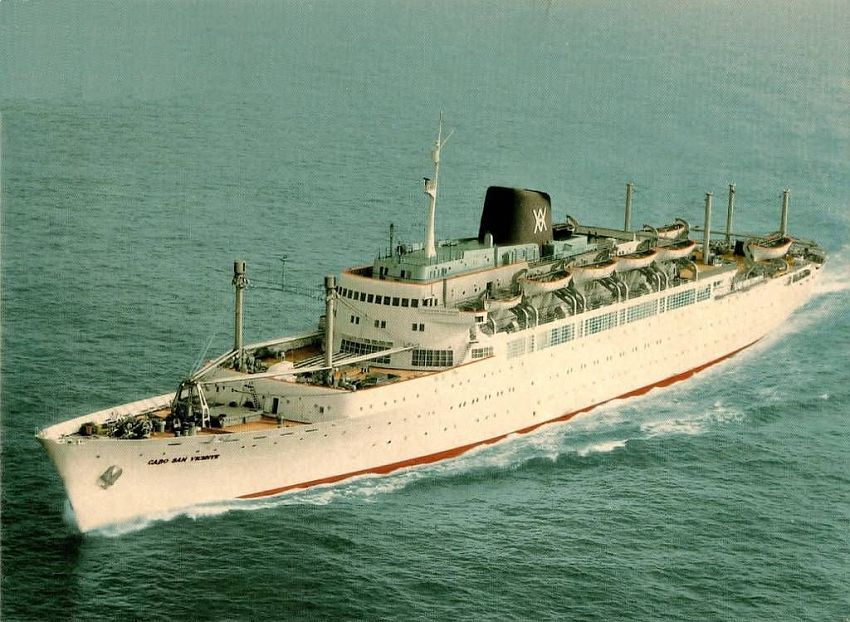
These ships had a tonnage of 14,491 GRT and 14,569 GRT (Gross Registered Tons) respectively and had a capacity of 241 passengers in Cabin Class and 582 in Tourist Class, and having a crew of 231.
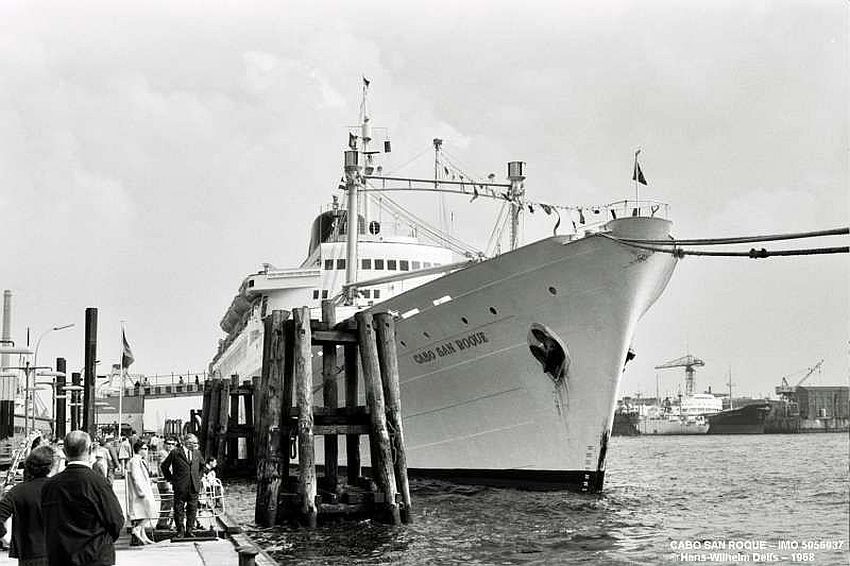
M.S. Cabo San Roque seen ready for departure in 1958, with the last visitors heading ashore, and some are seen on the gangplank
Photograph by & © Hans Wilheim Delfs
Public Rooms & Facilities:
The main public rooms were mostly located on Promenade Deck, commencing with a grand curved Music Room, being the Main Lounge, located far forward, this was followed by Lounge, come Smoking Room and Bar. With a Library and writing room located aft on the port side. Aft of the Cabin Class Lounges came several De Luxe Suites that even had private verandas with floor to ceiling windows. They were followed by the Tourist Class Lounge with bar and their Pool directly aft out on deck. Just above aft on Boat Deck was the delightful Veranda Lounge, come Night Club, with the Cabin Class Pool outside, with views overlooking the Tourist Class pool and the ships stern.
Thus, each ship had four fine Lounges, four Bars, two Library’s & Writing Rooms, two Restaurants, a Chapel, Gymnasium, two Swimming Pools, a Solarium, Sports Decks, two Play Room, and a yes, a share Cinema.
Accommodations:
Cabin Class cabins offered accommodations in twin bedded suites and staterooms, as well as three and four berth cabins, all having private facilities. Tourist Class had two to four berth cabins with shared facilities. The ships were fully air-conditioned
Below are a number of larger images which were
kindly provided by Mr. Gabriel Alomar Bouzas (
Cabin / First Class
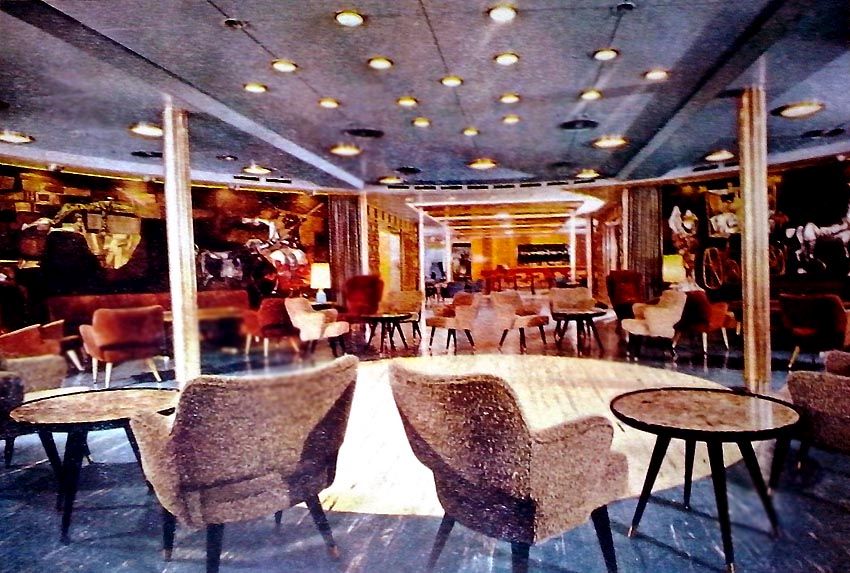
This is a view of the Grand Salon & Bar seen just forward, and this spacious venue is the Music Salon located on Promenade Deck
Provided
by Gabriel Alomar Bouzas (
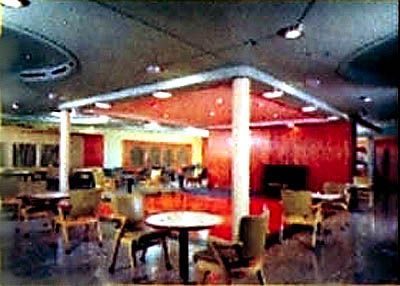
Aft on Boat Deck is the Verandah Lounge, which becomes the Night club at night!
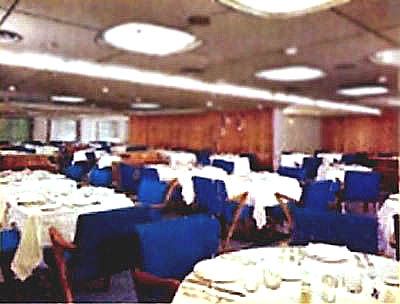
Blue Restaurant
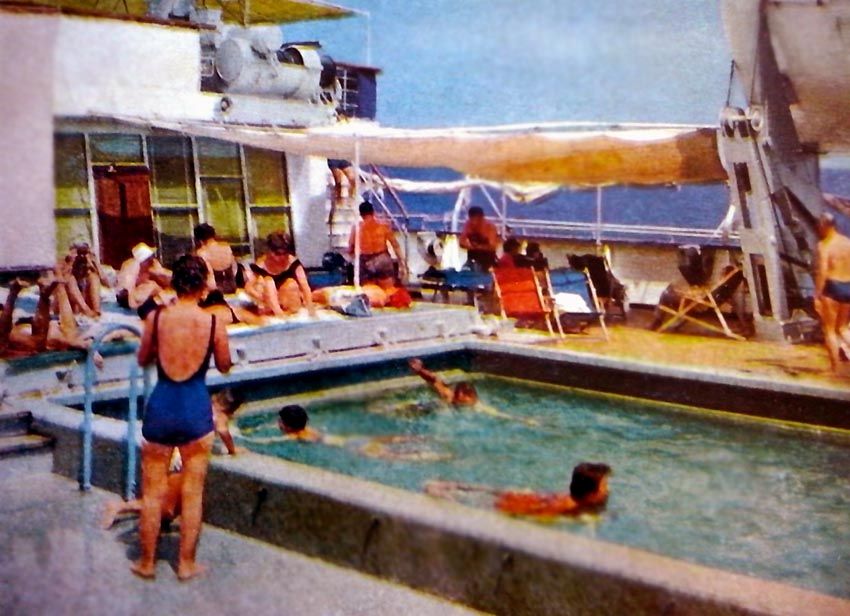
This the Cabin Class Swimming Pool, with stairs heading up to Boat Deck
Provided
by Gabriel Alomar Bouzas (
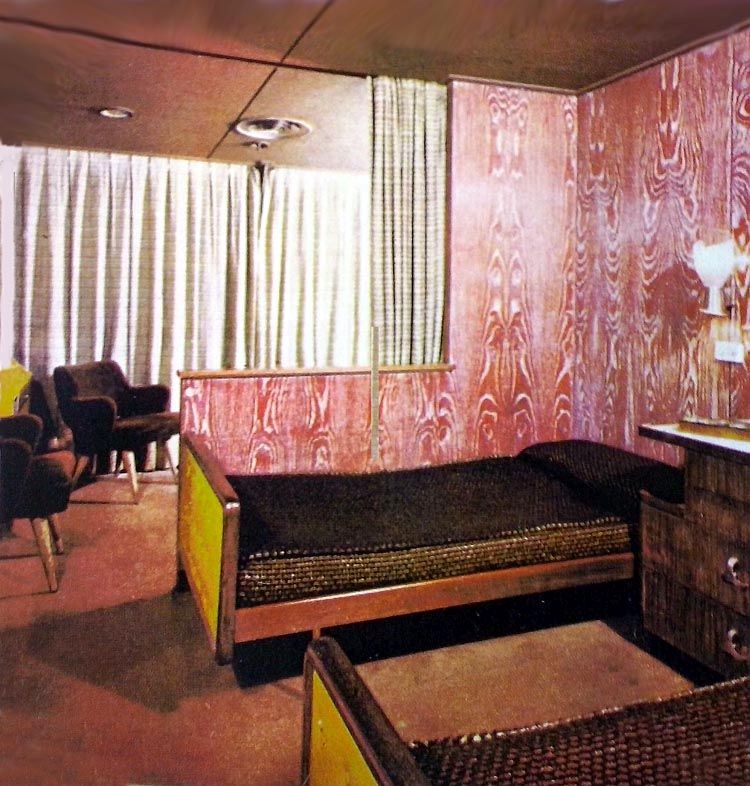
This is one of the De Luxe Suites
Provided
by Gabriel Alomar Bouzas (
Tourist Class
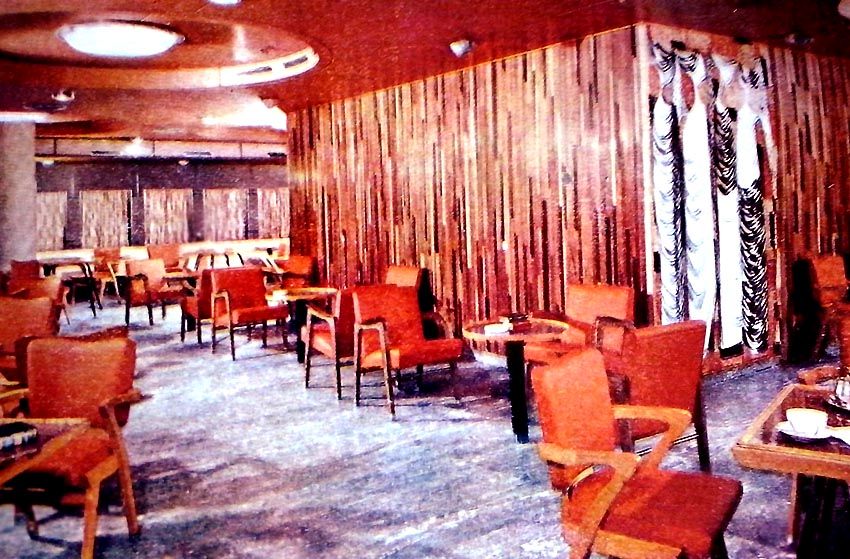
Aft on Promenade Deck is this fine Tourist Class Lounge & bar, and when the aft curtains are open, views are out to the pool
Provided
by Gabriel Alomar Bouzas (
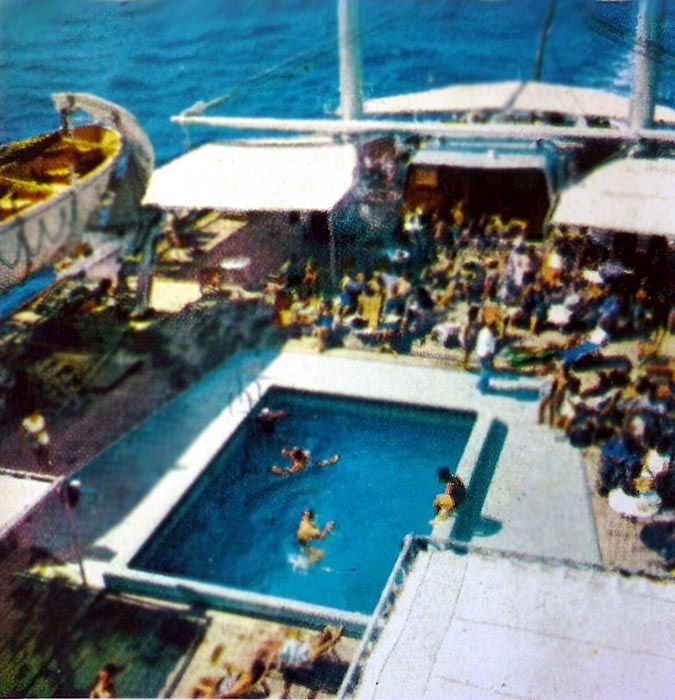
Provided
by Gabriel Alomar Bouzas (
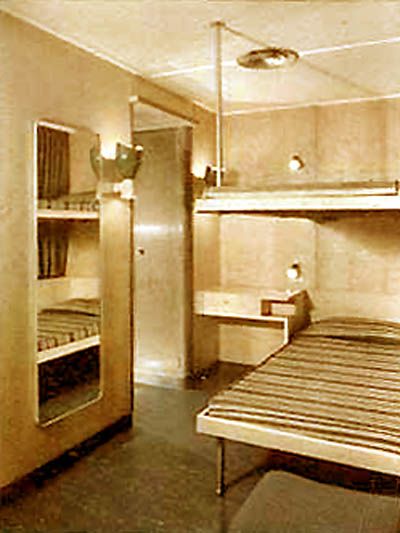
This is a typical tourist class two berth cabin
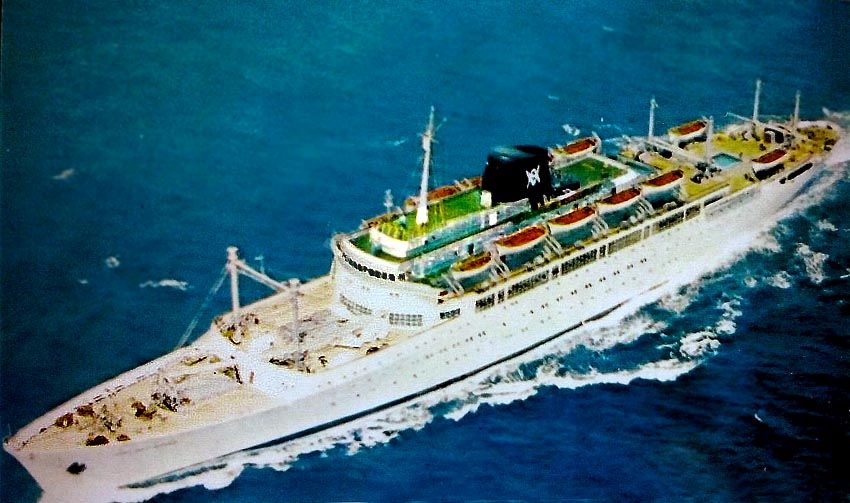
An excellent view of one of these fine Ybarra Liners, with both the Cabin & Tourist Class Pools in view!
Provided
by Gabriel Alomar Bouzas (
Covering major Public
Venues & Cabin Class luxury Accommodations
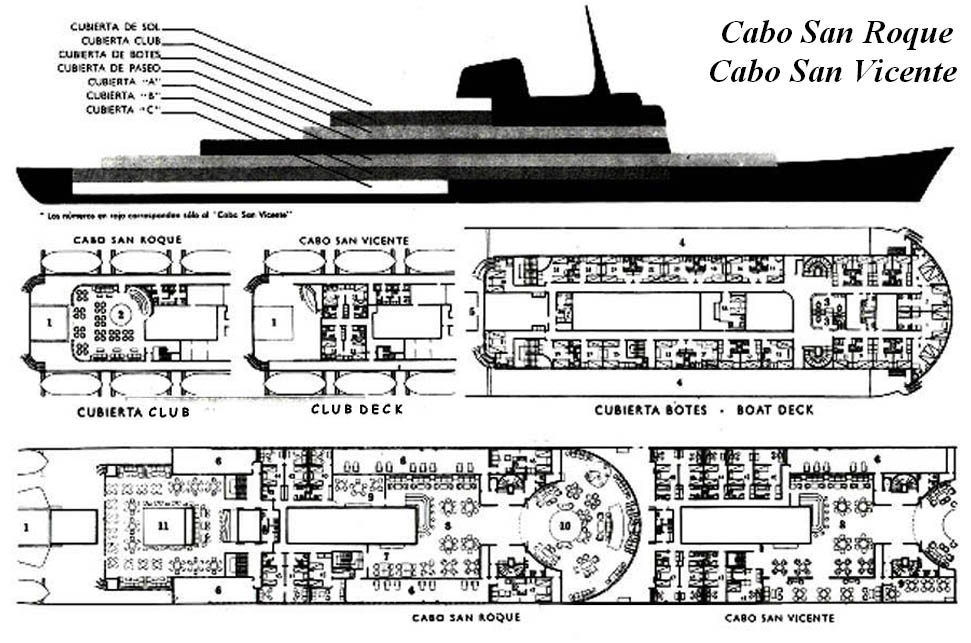
M.S. Cabo San Roque departed from
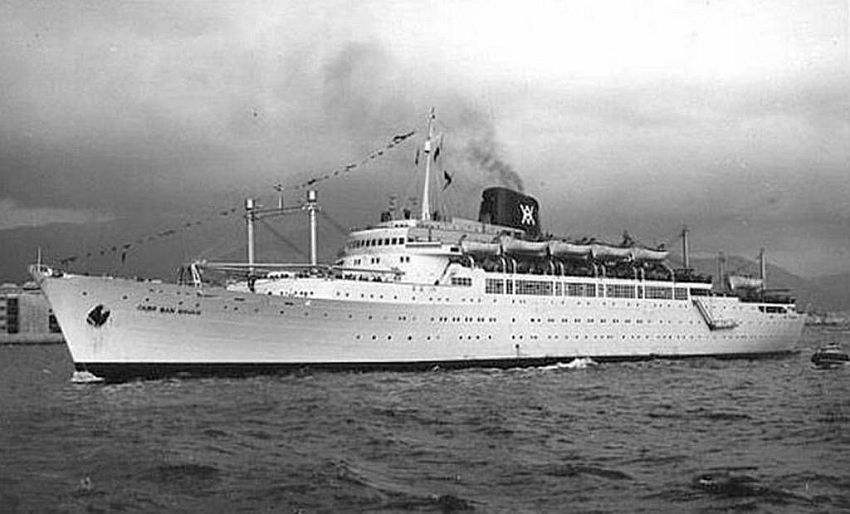
The Cabo San Roque is seen arriving in a port
Just for interest; around 1963 or 1964 both ships had a minor interior accommodation rearrangement, which saw changes as follows; there were now -189 Cabin Class passengers, and 652 Tourist Class passengers, a total of 841, being just 28 passengers more than before.
In addition to their line voyages to South America, both ships were used as Cruise Ships along the South American Coasts: Fueguinos Channels (Fueguino is a volcanic field in Chile, at the southernmost volcano in the Andes), also the ever popular “Carnival” Cruises, as well as Christmas and New Year Cruises, etc.
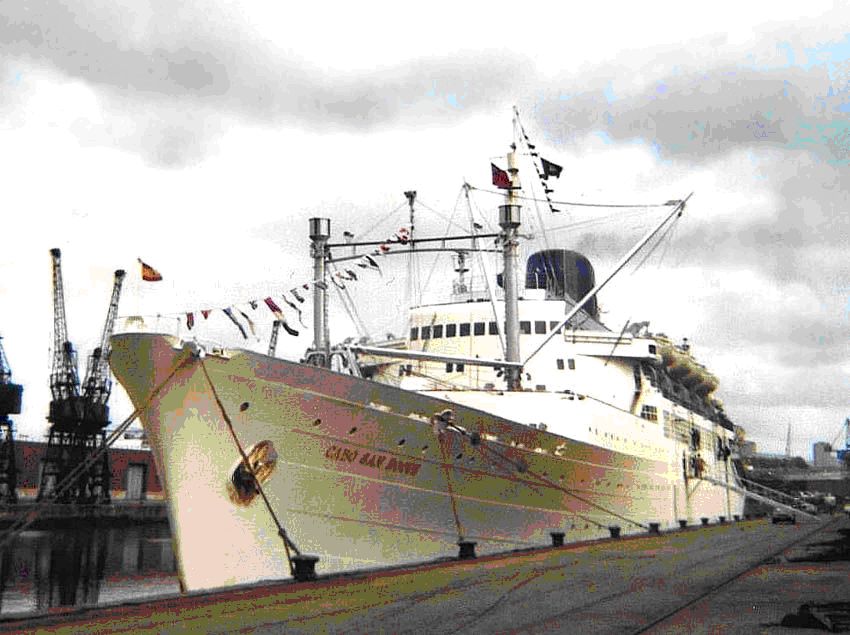
M.S. Cabo San Roque is seen at the Glasgow King George Docks in 1972
M.S. Cabo San Roque being the first of the two,
followed by the Cabo San Vicente, undertook “Midnight Sun
Cruises” to Antarctica and the
The first Midnight Sun departure was on the
Cabo San Roque, which departed Salvador de Bahía,
Below is a Map revealing the costal service
from
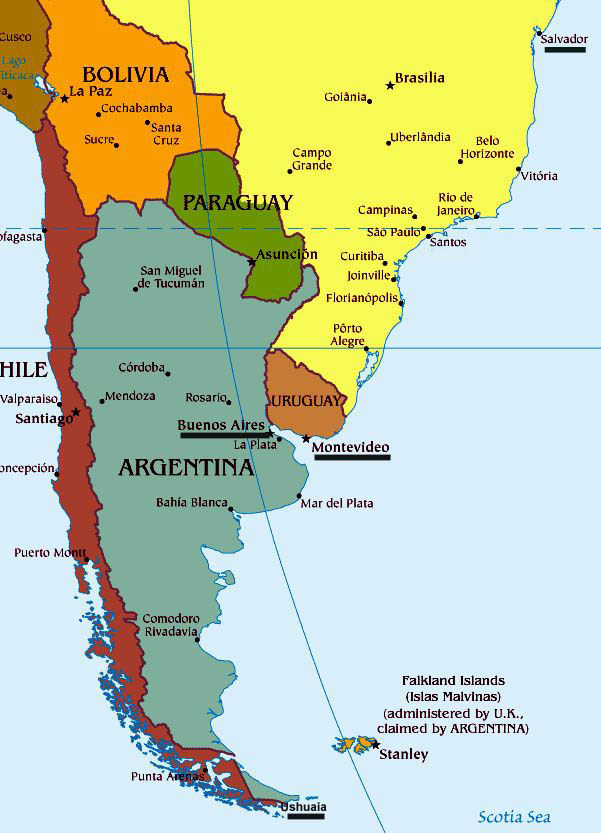
From Ushuaia it was sailing down to Antarctica g through Drake Channel where weather conditions is frequently very changeable, therefore the voyage is planned that it can be adjusted to the conditions as they come to hand.
The office in Ushuaia ensured that alternative excursions would be prearranged if changes were need, as it did on a 1974 voyage on the M.S. Cabo San Vicente. They even pre-arranged postal covers at several of the alternative stations visited to be postmarked with the correct date and ships name, etc.
In 1973 visits in Antarctic area included the
following areas to be visited: South Shetland Islands, the
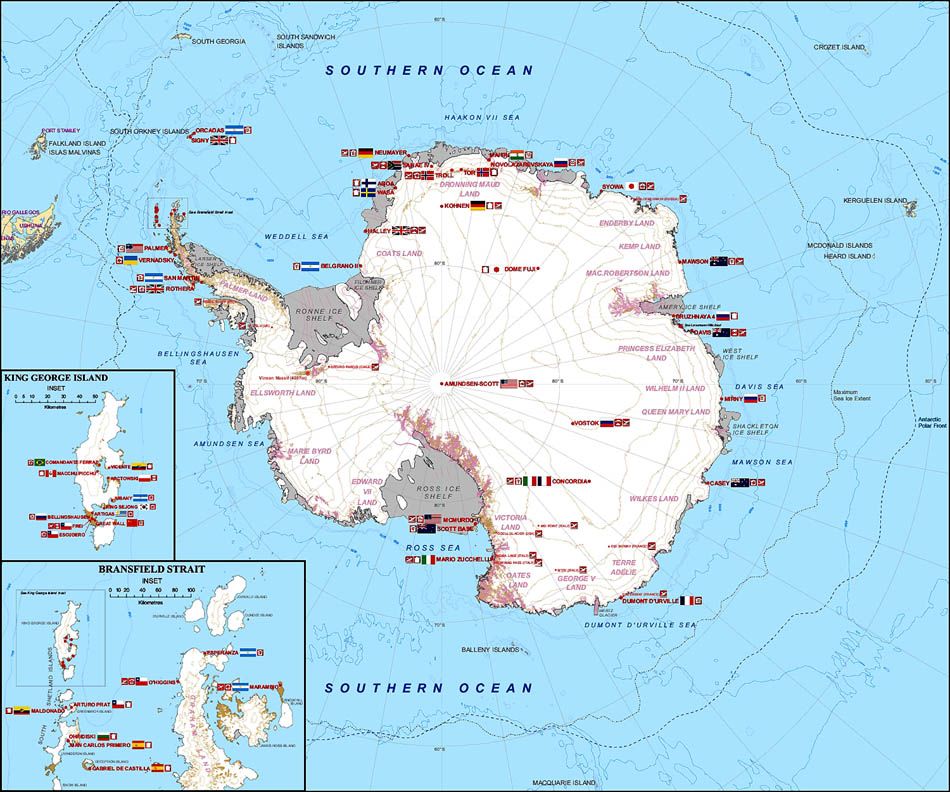
For a larger size map CLICK HERE
Or use this link: http://ssmaritime.com/Ybarra-Antarctica-map-lge.jpg.
During the Cabo San Roque Antarctic expedition she met the ship the MS Linblad Explorer as well as Jacques Cousteau RV Calypso, and our expedition headed for the Esperanza Army Station arriving on January 31, 1973.
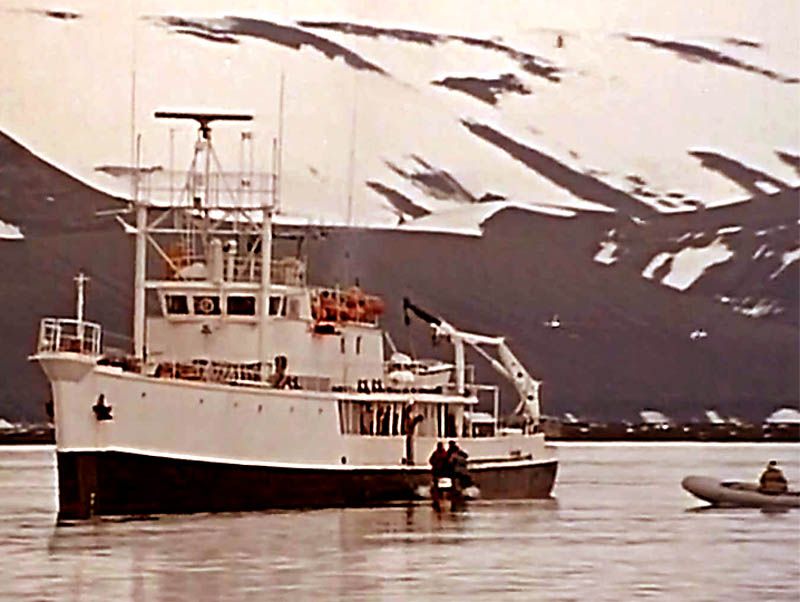
This
is the Jacques Cousteau RV Calypso, which is seen here at the
From this latest Station, the return voyage
headed for Port Stanley, Falkland Islands, then to
In all the Cabo San Roque undertook four Ushuaia
Exploration Voyages, whereas the Cabo San Vicente only made
three, the 1974-1975 voyage was her final “Midnight Sun
Cruise”. The main reason the voyages where called off was
not due to loadings, but due to the very high overhead, and as
costs for sailing and post stops in the region was so very high,
for the fares charged! During 1974
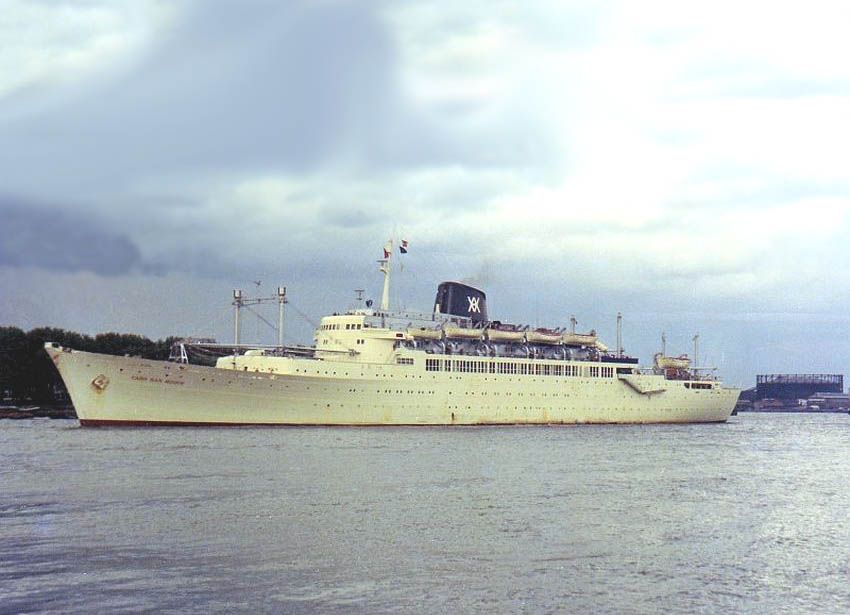
Above
& below:
And
then she is seen having arrived at
Photograph taken by & © Clive Harvey
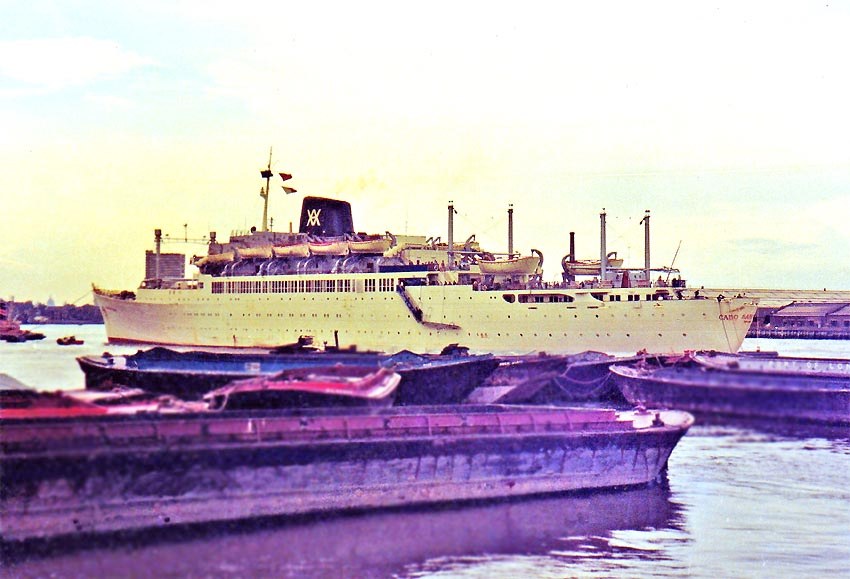
After the 1975 Ushuaia voyages concluded, only
the
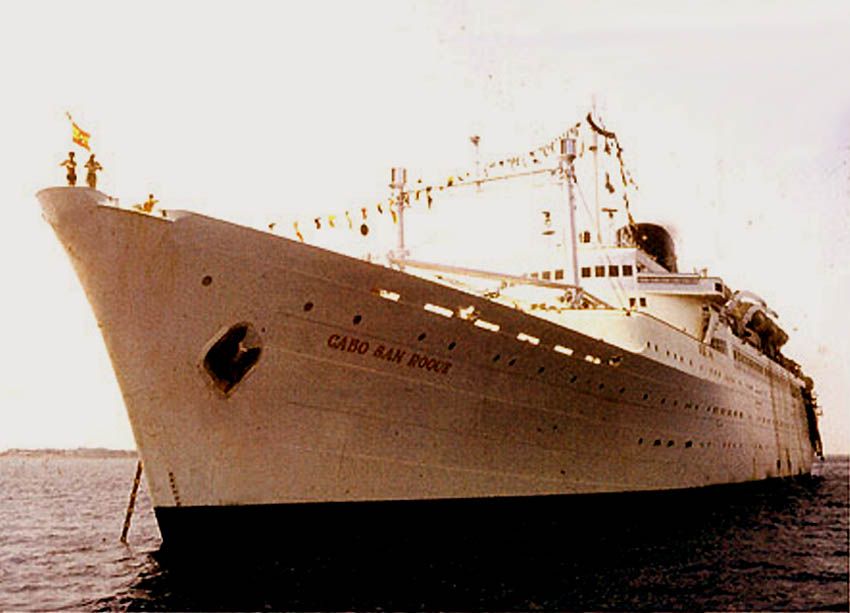
M.S. Cabo San Roque is seen at anchor during her very last days sailing for Ybarra Lines
The newer twins the M.S. Cabo San Vicente was obviously the more valuable of the two ships, thus with the declining passengers and cargo loadings in the early 1970s, the directors of Ybarra Lines decided that it would be wise and sell her as a good price could be obtained in 1975. She was soon sold to the Mogul Line of Bombay that same year and they renamed her “Noor Jehan” and they used her as pilgrim ship until 1985. She was sold to an Indian ship breaker in 1985 and she was soon broken up. Thus, the newer ship the two remained afloat for 26 years.
Whilst the Cabo San Roque was at
MS Africa Cuba would be used to transport the
Cuban army to
1.
Cabo San Roque - 2. Cabo San Vicente
Specifications:
1.
IMO:5056937.
2.
IMO: 5056951.
Built
at:
1.
2.
1. Tonnage: 14.491 GRT.
2. 14.569 GRT.
Length: 169,59 Mts.
Width: 21,09 Mts.
Draught: 8,29 Mts.
Power: Two Diesel Sulzer engines S10D72; 10 cylinders (720 x 1.250); by the builders.
Boilers: 14.600 BHP.
Propellers: Two.
Speed: 20 knots service speed, 22 knots maximum Knots.
Passengers: 241 Cabin Class & 582 Tourist Class.
Later: 189 Cabin Class & 652 Tourist Class.
Crew: 249.
Cargo
Holds: Five.
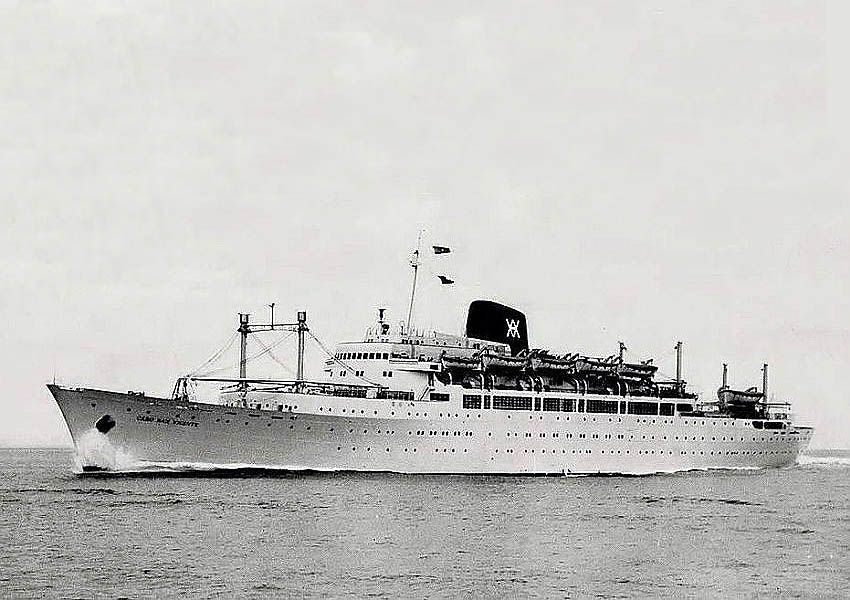
The elegant and modern liner for 1959 MS Cabo San Vicente is seen sailing at full speed at sea
Both ships were simply two of the finest afloat at the time, and they set a very high standard for Spanish maritime history!
Reuben
Goossens.
************************
I watched them come, I watched them go, and I watched them
die.”
************************
ssMaritime.com & ssMaritime.net
This notice covers all pages, although,
and I have done my best to ensure that all photographs are duly
credited and that this notice is displaced on each page, that is,
when a page is updated!
ssMaritime
is owned & © Copyright by